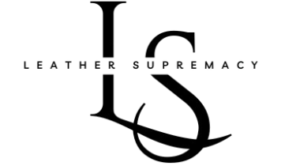Do you know, how is leather made? This question sparks curiosity in many, and for a good reason! For thousands of years, we’ve had leather in our lives, used in fashion, for comfort and to update our wardrobes with style. It has this luxurious appeal and it’s always durable, that’s why we keep buying leather jackets, shoes, bags, and furniture. In this article, we take a deep dive into how leather is made and break down all the processes across a journey and will share the history and science behind each step.
The Ancient Beginnings of Leather
The practice of making leather goes back to antiquity. Animal hides may have been the first material early humans learned how to use for clothing and shelter, treating the material with plants to stay more durable. Eventually, they preserved hides and then produced the first leathers. They made animal skins more flexible and resistant to decay back then, using natural oils and smoke, plants with tannin But through the centuries this became a fine art practiced by nearly every culture all over the world, from Egypt to Rome and beyond.
Understanding the Basics: What Is Leather?
In general, leather is that which cuts or tans the skin or hide of animals, mostly cows, buffaloes, sheep, goats, etc. Animal hides become leather by going through a tanning process that stabilizes the natural fibers in the skin so they won’t decompose, and make it more durable.
Interestingly, the collagen in animal skin is exactly what’s needed here. Leather is strong and flexible because collagen fibers are arranged in a dense weave. To transform raw skin into smooth, tanners use specific chemicals and treatments.
How is Leather Made? A Step-by-Step Guide
Follow the below core steps of how is leather made, from curing and soaking to tanning and drying.
Step 1: Prepping the Hide or Skin
The whole thing starts with taking off the hide from the animal, which is usually done by butchers at processing plants. Once removed the hide is cleaned, and inspected for flaws. The flesh is removed from the skin with a mechanical fleshing machine, to prepare it for the next steps. The surface is scraped carefully to leave only a clean surface for processing.
Step 2: Curing
To prevent the hide from decaying, it’s essential to cure it. This consists of salting the hide or freezing it. It draws out some moisture and creates a barrier to bacteria. The hide is usually left to cure for up to 24 hours before it’s ready for the next stage. For that reason, hides may be subjected to a faster method ‘brine curing’ in larger production facilities, whereby hides are soaked in a saltwater brine.
Step 3: Soaking and Cleaning

The hide is cured and then soaked in water to wipe dirt, salt, and other pollutants off it. It rehydrates the hide so that it becomes more pliable, too. Depending on the thickness of the hide, soaking can go on for up to two days.
Step 4: Liming and Unhairing
Then we come to the process in which we soak the hide in a lime and water solution to pull the hair. This mixture breaks the proteins in the hide holding the hair in place. Once the hair is softened it can be removed with specialised tools or machines. For a smooth finish, the remaining hair is scraped off by hand.
Step 5: Deliming and Bating
A process called deliming is employed to neutralize the lime’s very high pH and to ready the hide for tanning. It lowers the pH and so causes the hide to become softer and more pliable. Next, you get to the part “bating” where some enzymes are added to further soften the hide.
Step 6: Pickling
Pickling involves soaking the hide in a salt and acid mixture to further lower its pH. If mineral tanning is used this stage is critical as it prepares collagen fibers to absorb tanning agents. The salt stops the hide from becoming too acid so that the tanning process can go through the leather evenly.
Types of Tanning: The Heart of Leather-Making
In Tanning, raw animal hide can be made really into flexible, tough, durable leather that is resistant to water. Here are the main types of tanning used today:
Vegetable Tanning
A traditional method of vegetable tanning uses tannins, naturally occurring substances found in certain types of tree barks — oak, chestnut for example — to produce warm, earthy leather. It can take weeks, as hides are soaked in a tannin solution to absorb natural chemicals into the hides that prevent decay. It’s an ideal type of leather for furniture, belts, and wallets.
Chrome Tanning
Chrome tanning is a quicker process which, using chromium salts, tans hide in less than a day. This base is used to make stretchable leather that’s used for clothing as well as bags. Vegetable-tanned leather may be softer, but it’s less water and stain-resistant than this stuff — and that’s why it’s so popular for modern fashion items.
Oil Tanning
Oil tanning is a method in which fish or animal oils are rubbed on the hide, making soft, water-resistant leather. This type of leather is flexible and is mostly used to make work gloves and the like because it is durable and resists moisture.
Drying and Softening: Bringing the Leather to Life

Finally, the leather must dry after it has tanned. Hides are hung on rods in a cool place and slowed dried to keep them flexible. For certain instances ‘staker’ machine is used to stretch the leather still farther.
When it gets to about 80% dryness it is then covered in special oils that help bring more texture and color to the leather. Smoking the hide also makes certain types of leather darker. The tones of distinctive wood smokes add golden or rich brown tones to the leather making the leather pieces unique.
Finishing Touches
The final steps are then protection and the addition of polish. High gloss finish is also possible in leather though it can be buffed and reacted with ‘dyes or waxes’. For added shine, some leathers are given a coat of acrylic, or embossed with patterns for a textured look. It works as the finishing seal for all previous treatments
FAQs About Leather
What’s the primary raw material for leather?
Cowhide is used most often for leather, followed by goat, buffalo and some exotic hides such as alligator.
Where is leather commonly produced?
The USA, Italy, Pakistan, Brazil and India are huge producers of leather.
Is all leather made from animal hides?
Well, yes, animal hides are used for genuine leather and cowhide is the most common.
What are the main uses of leather?
Leather is important across many products including shoes and bags, furniture, car interiors and clothing.
In Conclusion
The history of how is leather made provides an intriguing insight into the making of this time-honored material. The making of leather has undergone many changes starting from ancient methods of tanning, to modern methods, but the core of it is still the same. The journey from curing and soaking, to tanning and finishing makes the raw animal hide into a beautiful and functional material. Whether you’re wearing or sitting on it, or carrying it, leather’s long history and special properties make it one of the most versatile materials around.
Once you’ve learned about how is leather made in great detail, you’ll realize how rewarding it is to know how the skill and artistry went into making each jacket, bag, or shoe.




